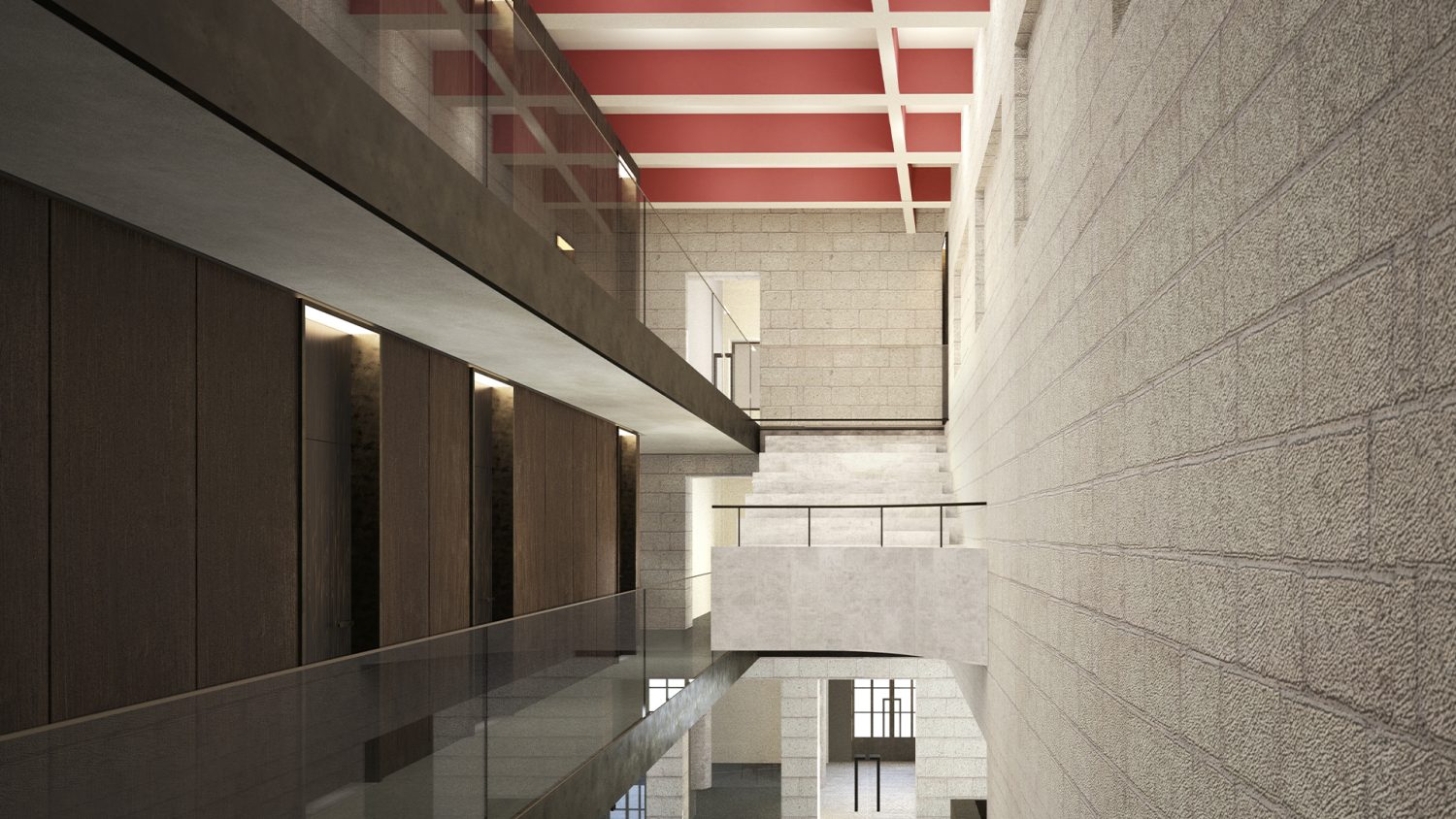EX HOUSE OF THE BALILLA NATIONAL OPERA - VIA MASCAGNI
MILAN, ITALY
Designed and built in the mid 1930s by Mario
Cereghini, this important example of Milanese Rationalist
design remained vacant in a state of abandon for a long
period after having been home to the renowned Milanese
Cinema Arti for many years.
The restoration project will soon begin work on converting
the building into a hotel. The internal layout will be redesigned
for its new function, and new additions will be built
to house technical services and necessary emergency exit
structures.
The edifice is a protected cultural heritage building,
so all intervention will be focussed on conservation and
respecting its original character. Any new elements introduced
will be designed to maintain close and recognisable
links with the historical layers of the building.
This project can be definitely classified as “critical and interpretative
restoration”, an expression typical of the Milanese,
or Italian, restoration procedure in general, which Arassociati
has always considered a fundamental aspect of its work.
For this reason, the architects have decided to preserve a
central void that incorporates a part of the theatre’s balcony
in the area of the ex-auditorium, to recall the building’s original
function.
As well as the internal reconstruction of the main building, and
the facade restoration, as described above, several additional
structures will modify the original contour of the building for
technical purposes and to contain the emergency staircases.
Parts of these additions are clad with bronze-coloured perforated
panels in a geometrical design to give the new structures
a homogeneous skin, while making them discernable
as contemporary additions.
An integrated part of the project involves the redesigning and
improvements to the garden which will become an important
outdoor space for the hotel. Many historical trees have
been preserved, and a decorative fountain, previously placed
against a demolished boundary wall, has been repositioned.
On the ground floor, the two separate entrances of the former
Cinema Arti will be preserved.
One will give access to
the reception lobby, and the other will lead to the restaurant
located on the lower floor, that is accessed by a new staircase.
The ground floor will also house an elevator directly connected
with a roof terrace for events. The route across the
lobby and the ex-auditorium leads to a large indoor garden.
The void in the centre of the former theatre forms the distribution
system to the first and second floors.
This was achieved taking advantage of the vast height of
the void area, which becomes a scenographic feature of the
entire project.








